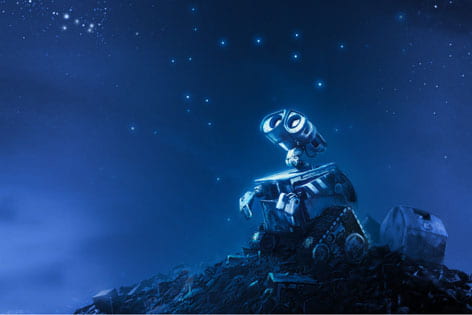Robots and superheroes: taking science public
James Hicks and Michael Dennin could tell you a story about the ontogeny of cardiovascular regulation in reptiles and Langmuir monolayers. Or they could talk to you about the science of WALL-E and Superman.

James Hicks and Michael Dennin could tell you a story about the ontogeny of cardiovascular regulation in reptiles and Langmuir monolayers. Or they could talk to you about the science of WALL-E and Superman.
For the layman, the second options certainly are more accessible. And while not all science can be translated for mass consumption, most scientists agree that society benefits from understanding the nature and value of their work.
That belief is behind UC Irvine’s “Year of Science” kickoff event. Hicks, ecology & evolutionary biology professor, and Dennin, physics & astronomy professor, will present “Robots and Superheroes: Translating Science for the Public” at 4:30 p.m. Thursday, Jan. 29, in the Biological Sciences III Lecture Hall. The free panel discussion, moderated by The Orange County Register’s “Science Dude” Gary Robbins, will focus on how science is best communicated in mass media – from blogs to the big screen.
“Year of Science” is a nationwide effort sponsored by the Coalition on the Public Understanding of Science. The organization encourages universities and other scientific institutions to sponsor events that make science personally and locally relevant.
“The University of California has joined COPUS in celebrating 2009 as the Year of Science to engage the public with the mysteries of science and the process of discovery. One of our responsibilities as scientific researchers is to share our work and its impact on the public,” says Jim Earthman, research associate vice chancellor. “If we’re to expect continued public support, especially in tough economic times, we need to let people know how science affects their everyday lives in all sorts of ways and what might be practical and achievable in the future.”
Hicks and Dennin have applied their scientific expertise to popular culture, reaching millions of people who ordinarily wouldn’t dive into a scientific journal.
Hicks worked for three years as a consultant on WALL-E, an animated robot love story. The film’s producers sought his input on the long-term effect of weightlessness on human physiology. In the movie, humans have trashed Earth and have been floating in a spaceship – a kind of zero-gravity Carnival Cruise – for 700 years.
“You have to consider that microgravity results in the loss of 1 percent bone density per month, and 2 percent muscle mass per week,” Hicks says. “From that, you can extrapolate that after a long period in space, humans would look like blobs.” When interviewed on National Public Radio, WALL-E director Andrew Stanton said Hicks’ analysis influenced the film’s portrayal of humans as bloated babies.
Dennin studies complex fluids (foams, granular materials), pattern formation, fluid dynamics, emergent behavior and complex systems. When Superman Returns hit movie theaters, media types from the National Geographic Channel to CNN called on him for his expertise on the man in blue tights.
Dennin teaches a freshman class on the “Science of Superheroes” – exploring the myths and realities of comic book physics. He applies real science to superpowers, answering weighty questions such as whether flying faster than the speed of light violates Einstein’s law of physics and whether Superman really could have X-ray vision.